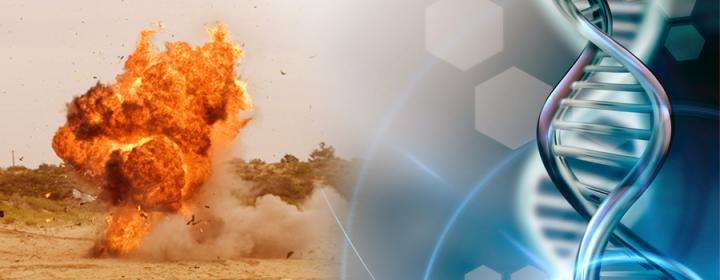Sam Houston state researchers study DNA from explosives

Researchers at Sam Houston State University (SHSU) hope to unmask manufacturers of homemade explosives using new advancements in DNA technology.
In a study published in Forensic Science International: Genetics, a team of graduate students and faculty from the Department of Forensic Science investigated several methods to recover and analyze DNA from improvised explosive devices, or IEDs, to help thwart terrorist efforts. The study examines a new method to optimize the recovery of DNA from detonated pipe bombs.
According to data from the Bureau of Alcohol, Tobacco, Firearms and Explosives, IEDs accounted for 24% of all bombings reported in the U.S. in 2014. These devices also were responsible for 75% of all reported bombing deaths and 100% of all reported law enforcement injuries.
Although there are many types of evidence that can be collected, DNA is valued because it is one of the few types that can identify the assembler of the device. However, the analysis of post-blast evidence can be difficult.
"While forensic DNA technology has made several advancements since the 1980s, the ability to produce high quality DNA profiles from IEDs can still be quite difficult," said Esiri Tasker, a PhD student who lead the study. "Issues such as high heat or low amounts of DNA can cause a DNA profile to be incomplete, or fail to produce a profile at all. Without the full picture, it is harder to identify suspects with DNA."
The study, "Analysis of DNA from post-blast pipe bomb fragments for identification and determination of ancestry," examined different collection and extraction methods for degraded and small samples of DNA left behind on detonated pipe bombs, including short tandem repeat markers (SNPs), single nucleotides polymorphisms via a new sequencing method called massively parallel sequencing or MPS, and insertion/null (INNULs). The new method for replicating genetic markers, SNPs via MPS, were found to be successful in identifying the ancestry of a suspect in most tests in the laboratory, which can provide another avenue for testing degraded DNA samples.
Because the materials needed to construct an IED are readily accessible, they will continue to be a weapon of choice for homegrown and international terrorists. However, new advancements in DNA technology may better equip investigators to help identify suspected bomb-makers than they have in the past. Researchers at SHSU hope that the results from this study can eventually be implemented to help identify bomb-makers and prevent future attacks on innocent people.
More information: Esiri Tasker et al, Analysis of DNA from post-blast pipe bomb fragments for identification and determination of ancestry, Forensic Science International: Genetics (2017). DOI: 10.1016/j.fsigen.2017.02.016
Provided by Sam Houston State University





















